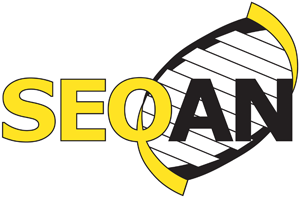
*BACKGROUND:*
The use of novel algorithmic techniques is pivotal to many important problems in life science. For example, sequencing the first draft oft the human genome would not have been possible without advanced assembly algorithms. However, owing to the high speed of technological progress and the urgent need for bioinformatics tools, there is a widening gap between state-of-the-art algorithmic techniques and the actual algorithmic components of tools that are in widespread use.
*RESULTS:*
To remedy this trend we propose the use of SeqAn, a library of efficient data types and algorithms for sequence analysis in computational biology. SeqAn comprises implementations of existing, practical state-of-the-art algorithmic components to provide a sound basis for algorithm testing and development.
In [1], we describe the design and content of SeqAn and demonstrate its use by giving two examples. In the first example we show an application of SeqAn as an experimental platform by comparing different exact string matching algorithms. The second example is a simple version of the well-known MUMmer tool rewritten in SeqAn. Results indicate that our implementation is very efficient and versatile to use.
*CONCLUSION:*
We anticipate that SeqAn greatly simplifies the rapid development of new bioinformatics tools by providing a collection of readily usable, well-designed algorithmic components which are fundamental for the field of sequence analysis. This leverages not only the implementation of new algorithms, but also enables a sound analysis and comparison of existing algorithms.
References:
1 A. Döring, D. Weese, T. Rausch, and K. Reinert, “SeqAn an efficient, generic
C++ library for sequence analysis.,” Bmc bioinformatics, vol. 9, iss. 1, p. 11,
2008.
View at NCBI here
-For more tutorials see: https://seqan.readthedocs.org/en/master/.
-Presentations of the SeqAN usermeeting 2016 can be downloaded here.

